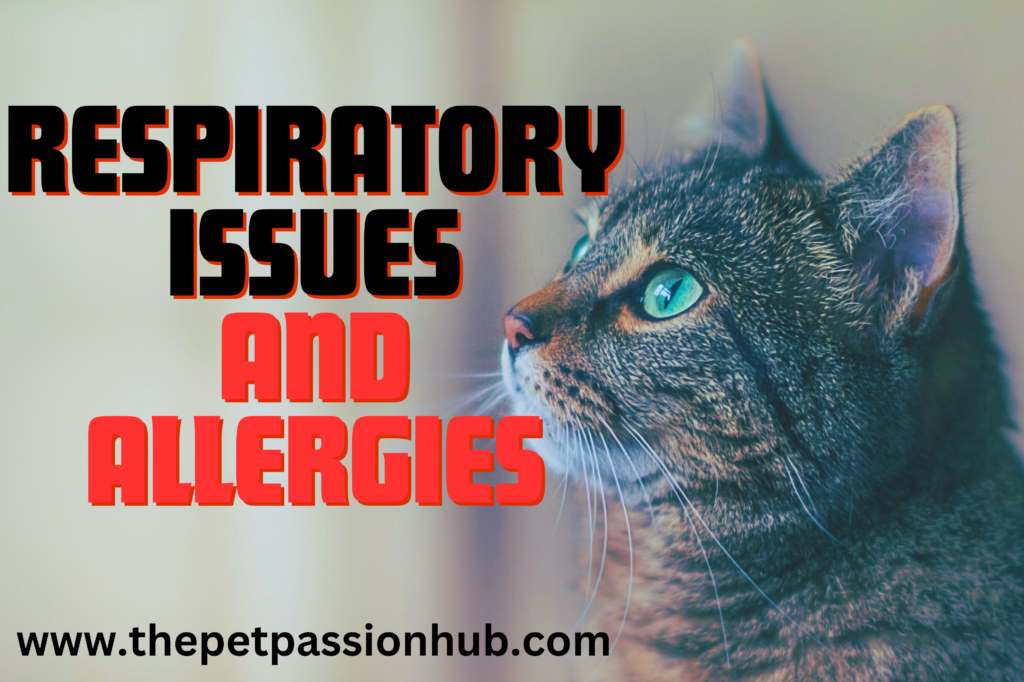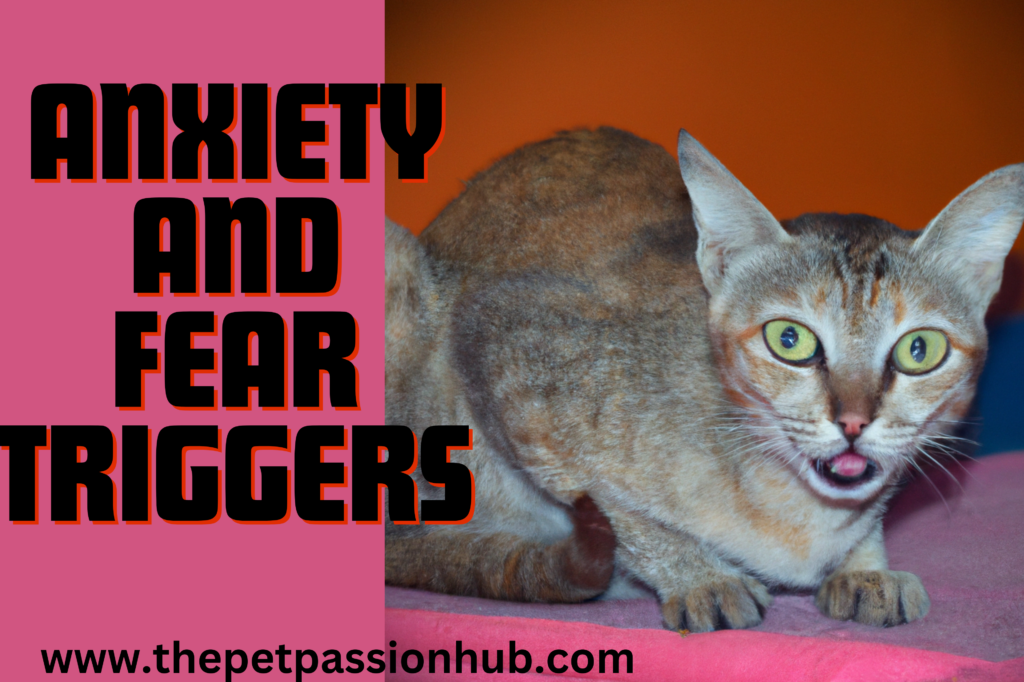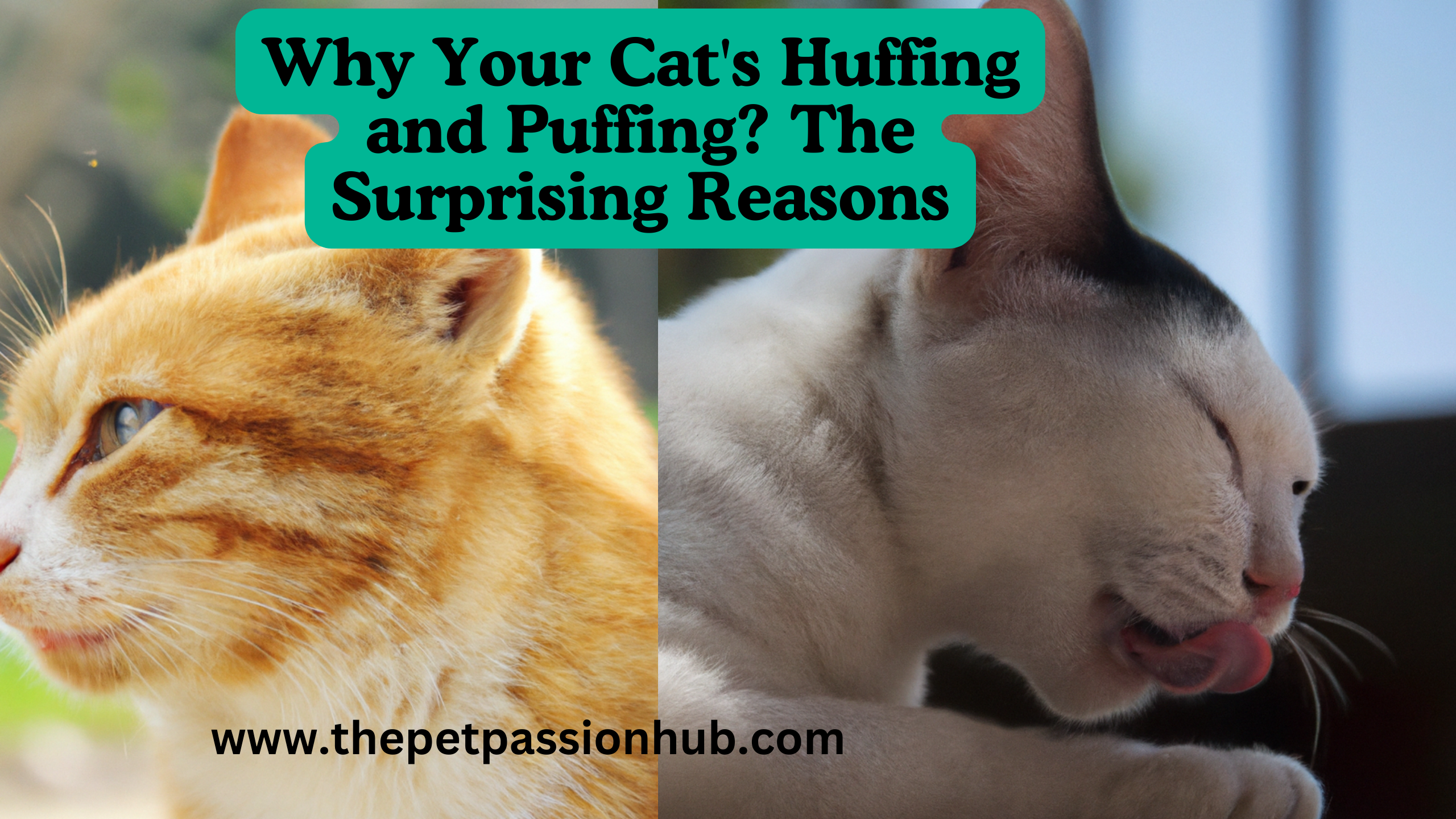Introduction
Is your cat huffing and puffing, leaving you puzzled and worried?
While it’s common for cats to exhibit various breathing patterns, persistent huffing and puffing could indicate an underlying issue that requires attention.
From asthma to heart problems, there are surprising reasons behind your feline friend’s unusual respiratory behavior.
In this article, we’ll delve into the world of cat breathing problems, uncovering the primary causes of huffing and puffing in felines (the scientific term for cats). Equipping you with the knowledge to better understand and assist your beloved pet. Explore the surprising reasons behind why your cat’s huffing and puffing?
Understanding your cat’s behavior
The sight of your beloved feline companion panting and breathing heavily can be alarming. But it’s essential to understand that respiratory issues and allergies can affect our cats just as they do humans.
Often overlooked, these issues can arise from various sources, including environmental triggers such as pollen, dust, or smoke, as well as underlying health conditions like asthma or heart disease.
Allergies in cats are particularly intriguing due to their complex nature and the various symptoms they can manifest.
Cats may exhibit sneezing, coughing, or wheezing in response to airborne irritants. Making it crucial to monitor their respiratory health closely.
Furthermore, respiratory issues such as labored breathing. And rapid panting could indicate potential distress or discomfort in your cat’s respiratory system.
By recognizing these signs early and seeking professional veterinary care when necessary. You can help ensure your feline friend’s optimal respiratory well-being.
Exploring the surprising reasons behind why your cat’s huffing and puffing?
Physical Health: Respiratory issues and allergies

Environmental stress can significantly impact a cat’s behavior and overall well-being.
Changes in the home environment such as rearranging furniture, introducing new pets, or even moving to a new house can cause stress in cats.
These changes disrupt their sense of security and familiarity, leading to increased anxiety and potential behavior issues.
It’s important for cat owners to be mindful of these environmental changes. And proactively manage them to help alleviate their feline friends’ stress.
One way to mitigate environmental stress is by providing a consistent routine for your cat.
Cats thrive on predictability, so maintaining regular feeding times, play sessions, and quiet places for rest. It can help create a sense of stability for them amidst environmental changes.
Additionally, creating safe spaces within the home where your cat can retreat when feeling overwhelmed. It can provide much-needed comfort during times of upheaval in the environment.
As responsible pet owners, it’s crucial to recognize the impact of our home environments on our cats’ well-being. And take proactive steps to minimize their stress levels.
Environmental Stress: Changes in the home environment
Emotional distress can manifest in various ways for our feline friends. And anxiety and fear triggers are common culprits behind these behaviors.
Just as humans experience stress and uncertainty, our cats also grapple with their own emotional turmoil.
The triggers for anxiety and fear in cats can range from sudden changes in their environment to loud noises or unfamiliar scents, leading to huffing, puffing, and other anxious behaviors.
Understanding these triggers is crucial for providing a safe and supportive environment for our beloved pets.
It’s important to recognize that cats may exhibit subtle signs of distress. Such as excessive grooming or hiding away from human interaction.
These behaviors often stem from internalized anxiety or fear triggers that require compassionate attention.
By acknowledging the emotional complexity of our feline companions. We can actively work towards reducing their anxiety and ensuring they feel secure in their surroundings.
A proactive approach that involves creating a calm and predictable environment can help alleviate the triggers that prompt huffing and puffing behavior in cats while promoting their overall well-being.
Emotional Distress: Anxiety and fear triggers

As adorable as it may seem to see your cat panting, it’s actually a sign of potential trouble. Overheating is often the culprit behind excessive panting in cats, and it shouldn’t be taken lightly.
Cats have a limited ability to cool themselves down compared to humans, so when they are exposed to high temperatures or engaged in strenuous activity, they can struggle to regulate their body temperature effectively.
This can lead to heavy breathing and panting as their bodies attempt to cool down.
The excessive heat not only causes discomfort for your furry friend but also poses serious health risks. Heatstroke and dehydration can quickly set in if proper measures are not taken to keep your cat cool and hydrated.
It’s essential for cat owners to be mindful of the environment their pets are exposed to, especially during hot weather or when engaging in physical activities.
Providing ample shade, ventilation, and access to fresh water can go a long way in preventing overheating and keeping your cat safe from the dangers of excessive heat.
The Truth About How Long Kittens Cry For Their Mom
Overheating: Too much heat causing panting
Playful behavior in cats is often synonymous with excessive activity and excitement. However, this seemingly limitless energy can sometimes leave cat owners puzzled.
While it’s easy to label the boundless bouncing and erratic chasing as just typical cat behavior, understanding the underlying reasons can provide valuable insights into your feline friend’s psyche.
A cat’s exuberant playfulness may stem from a need for mental stimulation or could be an outlet for pent-up energy, especially in indoor cats.
By engaging in rigorous play, they’re simply giving vent to their natural instincts which include stalking, pouncing, and hunting imaginary prey.
Furthermore, playful behavior can also serve as a form of communication for cats – towards both their human companions and other feline housemates.
It’s not uncommon for overly active antics to occur when a cat is seeking attention or attempting to establish dominance within multi-cat households.
Ultimately, while excessive activity might seem exhausting at times, it’s crucial to recognize that playfulness is an integral part of a cat’s overall well-being and should be encouraged and nurtured appropriately within the household environment.
Playful Behavior: Excessive activity and excitement
In conclusion, understanding and addressing your cat’s huffing requires a holistic approach that takes into account both physical and emotional factors.
While respiratory issues are common causes of huffing in cats, it is important to also consider the potential psychological or behavioral triggers behind this behavior.
Environmental stressors, anxiety, or underlying medical conditions can all contribute to your cat’s huffing, so it’s crucial to consult with a veterinarian to rule out any serious health issues.
Furthermore, addressing your cat’s huffing may involve making lifestyle changes such as providing a stress-free environment, offering mental and physical stimulation through interactive play and toys, and maintaining regular veterinary check-ups.
Additionally, understanding your cat’s individual personality and preferences can help tailor specific strategies to alleviate their huffing.
By taking a comprehensive approach that encompasses both physical health and emotional well-being, you can better support your feline companion in overcoming huffing behavior.
Conclusion: Understanding and addressing your cat’s huffing
In conclusion, understanding and addressing your cat’s huffing is crucial for their well-being. While huffing may seem harmless, it can be a sign of underlying respiratory issues or stress.
By paying attention to your cat’s breathing patterns and seeking veterinary advice when necessary, you can ensure timely intervention and treatment.
It’s also important to recognize that huffing in cats could indicate anxiety or discomfort in their environment.
Taking steps to create a calm and enriching living space for your feline companion can help alleviate stress-related huffing episodes.
Additionally, providing proper hydration, clean air, and regular grooming can contribute to overall respiratory health and reduce the likelihood of excessive panting or heavy breathing in your beloved pet.
Understanding the potential causes of cat huffing goes beyond just addressing breathing problems; it involves promoting a holistic approach to your cat’s physical and emotional well-being.
In this article we explore the surprising reasons behind your cat’s huffing and puffing?
By being attuned to their needs and seeking professional guidance when needed, you can ensure that your feline friend leads a healthy and fulfilling life free from unnecessary respiratory distress.
FAQs
- Q: The surprising reasons behind why your cat’s huffing and puffing?
A: Huffing and puffing in cats can be a sign of stress, anxiety, or respiratory issues. - Q: Should I be concerned if my cat is huffing and puffing?
A: Yes, it’s important to monitor your cat’s behavior and consult a veterinarian if you notice prolonged huffing and puffing. - Q: Can huffing and puffing in cats be a sign of illness?
A: Yes, it could indicate an underlying medical condition such as asthma or heart disease. - Q: What can I do to help my cat if they are huffing and puffing?
A: Provide a calm and comfortable environment for your cat and seek veterinary advice promptly. - Q: Can environmental factors cause huffing and puffing in cats?
A: Yes, changes in the environment, such as air quality or temperature, can impact your cat’s breathing patterns. - Q: Is there anything I should avoid doing if my cat is huffing and puffing?
A: Avoid exposing your cat to smoke, strong odors, or other potential irritants that could worsen their breathing difficulties. - Q: Can obesity contribute to huffing and puffing in cats?
A: Yes, excess weight can put strain on a cat’s respiratory system, leading to huffing and panting. - Q: Are there specific breeds more prone to huffing and puffing than others?
A: Brachycephalic breeds (e.g., Persian cats) are more susceptible due to their facial structure that can impact breathing.
